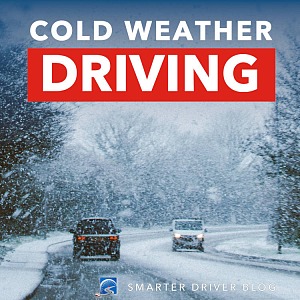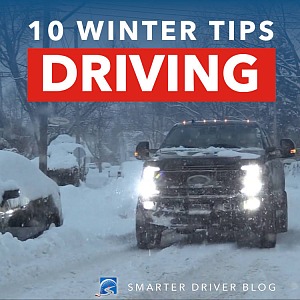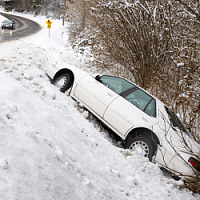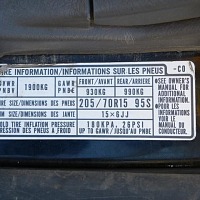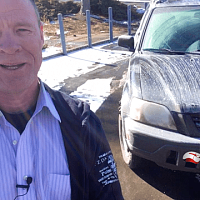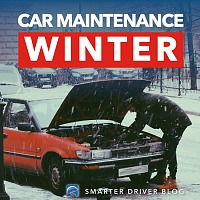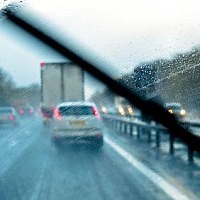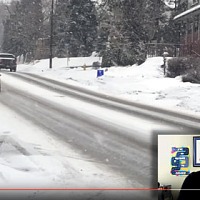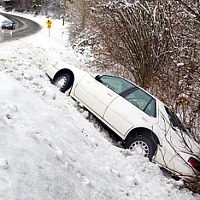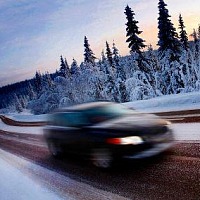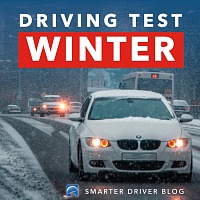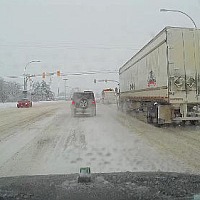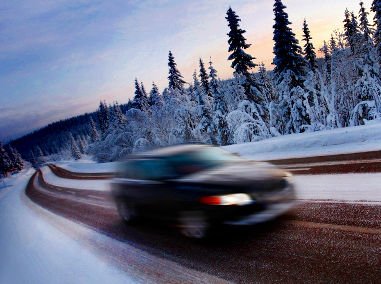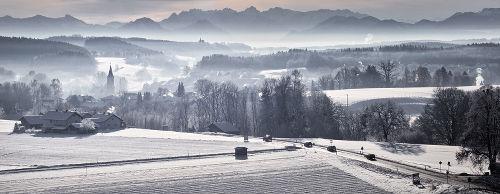 These 15 tips will help you drive through the winter with few, if any, incidents.
These 15 tips will help you drive through the winter with few, if any, incidents.
Winter driving requires a different skill set to operate your vehicle safely.
1) Bridges and overpasses freeze first.
When the temperature dips to the freezing point, bridges and overpasses freeze first because the cold air works on the bridge from both the top and underneath.
Consequently, ice forms on these structures.
2) It is more slippery when the temperature is near the freezing mark.
Compared to other road surfaces, ice offers the least amount of traction.
Unbeknownst to many people however, is that ice is slippery when the outside temperature is near the freezing mark, as a result of the layer of water on top.
When ice cubes first come out of the freezer these are sticky, but after a minute or so, the ice cube begins to melt.
A layer of water forms on the surface.
With a layer of water on the surface, ice cubes are very slippery indeed and will skate across the countertop if you are not careful.
3) Clean all snow and frost from glass and lights before departing.
One of the fundamental components of safe driving is communication.
If your vehicle is covered with snow, you can neither be seen or see.
It is imperative that other driver can see your lights and turn signals.
As well, it is important the you are about to see and observe other traffic while driving.
4) Stock your vehicle with an emergency survival kit if you’re venturing into rural areas.
If you are venturing into rural areas, it is imperative that your vehicle be stocked with an emergency survival kit.
See our recent blog for a full explanation.
 5) Ensure that your windshield washer tank is topped up with “winter” windshield cleaner.
5) Ensure that your windshield washer tank is topped up with “winter” windshield cleaner.
If roads are slushy, as often happens during the winter, roads will be wet and greasy.
The spray from other traffic will require you to clean your windshield often so you can be seen.
It is imperative to have windshield washer fluid to clean the windshield while driving.
6) Mount winter tires on your vehicle if the temperature is consistently below 5°C for weeks at a time.
Mount winter tires on your vehicle for increase traction and control during cold and slippery conditions.
7) Know that when conditions are slippery, intersections are the most slippery – right behind bridges and overpasses, and areas that lie in shadow.
Due to traffic starting and stopping at intersections, these become extremely slippery because the spinning and skidding tires of vehicles melt the snow and create a layer of water on top of the ice and snow.
Consequently, it is imperative that you slow well back from the intersection, creep up to stop traffic and then stop.
Do not attempt to stop as you would in the summer time, otherwise you may find yourself rear-ending the vehicle in front.
8) Use low beams when driving at night in snow.
Low beams point down and under the snow; high beams point into the falling snow and the light is reflected back to the driver.
At night in falling snow with high beams activated, it is like driving at “warp” speed in Star Wars.
9) Braking and steering are separate actions.
In compromise and slippery conditions, steering and braking must be two separate actions.
In other words, you must slow to less than 15km/hr, release the brake, and then steer around the corner.
If you attempt to steer and brake at the same time, you will find that your vehicle will continue in a straight line.
10) Carry our extension chord with you if you live in sub-zero temperatures and your vehicle must be plugged in to start.
When the temperature dips below -15°C, most vehicle need to have their block heater plugged in at night.
This action ensures that the vehicle’s engine starts in the morning.
In many locations where there are sub-zero temperatures for extended periods there will be plug ins located at parking lots and other places.
Carry your extension with you and plug in.
To ensure that no one steals your extension chord, put it under the wheel and back over it so it’s under the tire.
11) Keep your fuel tank topped up to prevent fuel line freezing.
All fuel tanks have some water condensation; and when the vehicle is run for a period this water becomes vapour, but when you park the vehicle and it sits, the water vapour becomes ice, which freezes in the lines.
By keeping the fuel tank full, it reduces the amount of water vapour in the tank that could potentially cause the fuel system to freeze.
12) Allow yourself extra time when you know conditions are bad or the temperature is near the freezing mark.
We all lead busy lives; however, it is imperative that extra time is allotted for one’s commute when the conditions are bad.
In bad conditions, it is the people in a hurry that often end up in the “proverbial rhubarb”.
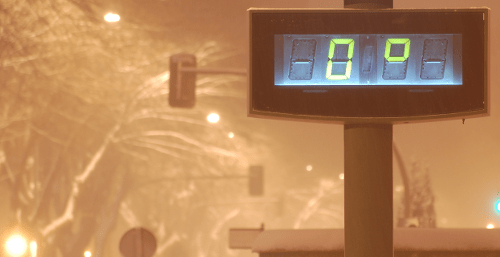 13) Have sunglasses on hand for glare that is compounded by reflecting snow.
13) Have sunglasses on hand for glare that is compounded by reflecting snow.
Glare can blind drivers. And glare is compounded when sunlight is reflected off crisp, freshly fallen snow.
Due to the every-changing conditions of winter, it is imperative to carry sunglasses in your vehicle to combat glare.
14) Always, always pass snowplows and other winter maintenance vehicles on the left.
Due to the snow dust kicked up by snowplows and other winter road maintenance vehicle it is imperative that you pass these on the left.
As well, these vehicles often have part of their machinery that extends out into the right-hand lane; therefore, if you pass on the right, you could be struck by these protrusions and collide with the snowplow.
As well, because of the snow dust, operators of these vehicles often cannot see other traffic.
Finally, know that when you pass a snowplow or other vehicle, you are moving from relatively good road conditions to unplowed and un-salted conditions.
15) If you’re driving in mountainous regions consider carrying chains in your vehicle
If you are venturing into mountainous regions, it is prudent to carry winter chains for your vehicles.
First, road conditions in the mountains can change suddenly.
Second, mountain roads can receive a lot of snow in a short period of time; and in keeping, winter road crews are not always able to respond immediately.
Thus, if you’re heading up to the ski hill or into the back country for winter recreation, have chains on your vehicle to be ready for the sudden and ever-changing conditions of winter.

